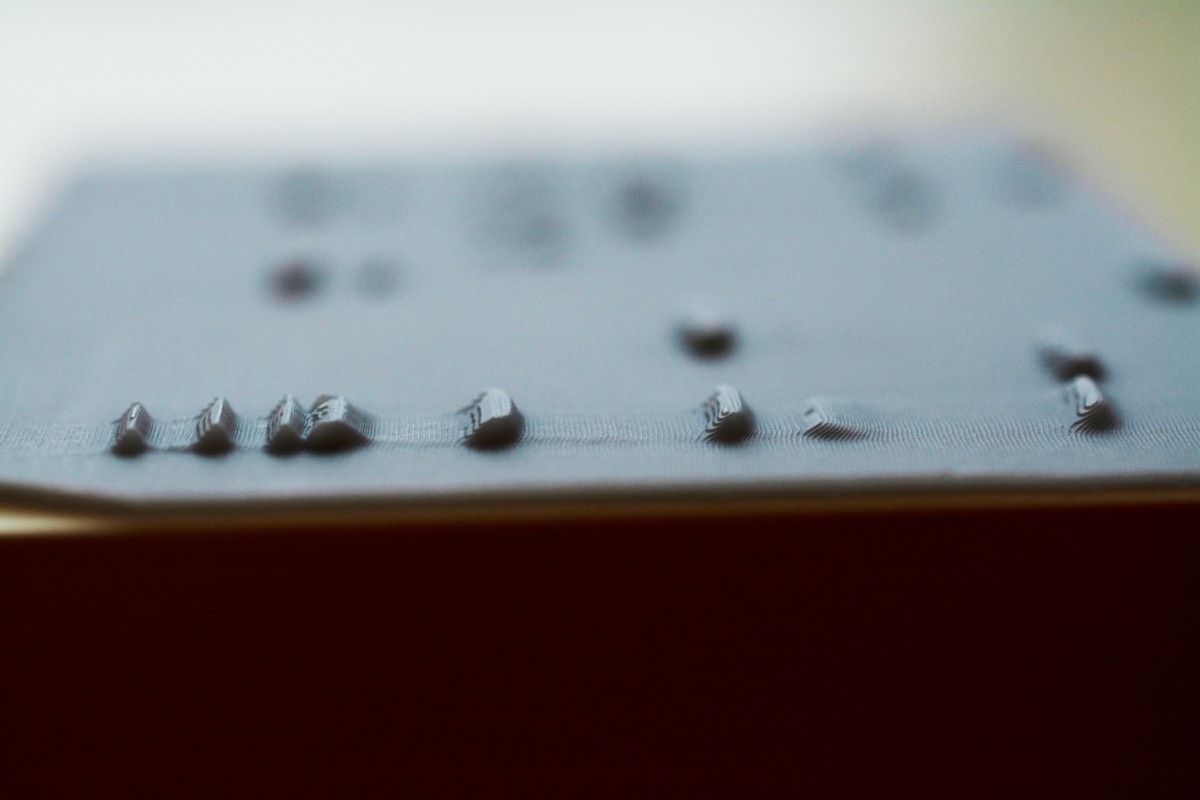- Posted On:2022-08-31 18:08
-
997 Views
19th-century art form revived to make tactile science graphics for blind people
In the 19th century, an art form known as lithophanes was all the rage in Western Europe. These thin engravings were usually made from translucent materials like porcelain or wax. When backlit, a glowing 3D image would appear that would change its features in response to variations in the light source. Now researchers have revived this art form to create tactile graphics to illustrate scientific data that glow with high resolution. According to a recent paper published in the journal Science Advances, these lithophanes are accessible to sighted and visually impaired people, making them a universal visualization tool for scientific data.
"This research is an example of art making science more accessible and inclusive. Art is rescuing science from itself," said co-author Bryan Shaw, a biochemist at Baylor. "The data and imagery of science—for example, the stunning images coming out from the new Webb telescope—are inaccessible to people who are blind. We show, however, that thin translucent tactile graphics, called lithophanes, can make all of this imagery accessible to everyone regardless of eyesight. As we like to say, 'data for all.'"
The word "lithophane" derives from the Greek litho (stone or rock) and phainein (to cause to appear), popularly translated as "light in stone." The art form's roots may date back to ancient China, as many as 1,000 years before the Tang Dynasty. (Historical sources describe paper-thin bowls with hidden decorations.) But to date, no actual lithophanes are known to have been in China before 1800.
Exactly who perfected the process of making lithophanes is still debated among historians. The common 19th-century process involved etching a 3D design into a thin sheet of translucent wax or porcelain using traditional relief and intaglio printmaking techniques. More light would shine through the parts of the carving where the wax was thinnest.
These lithophanes were between one-sixteenth of an inch to a quarter-inch thick. They were displayed as plaques, hung in windows or in front of shields with lit candles behind them as a light source. Lithophanes could also serve as night lights, fireplace screens, tea warmers, or ornaments engraved with erotic images. American industrialist Samuel Colt filled his Hartford, Connecticut, home with more than 100 lithophanes and commissioned 111 lithophane versions of a photograph of himself to give to friends and associates.
The technique fell out of favor after the invention of photography, but the advent of 3D printing has revived interest. Today, lithophanes are typically made with plastic, 3D printed from any 2D image that has been converted to a 3D topograph, according to Shaw and his co-authors, which they did with free online software. Four of those co-authors have been blind since birth or childhood, yet still successfully completed their PhDs. But they are rare examples. Finding a way to create universal tactile science graphics that both blind and sighted individuals can use would remove a longstanding barrier that has kept many visually impaired people out of the sciences.
Further, "Current graphics and assistive technologies in the chemical sciences fall short of providing a single high-resolution format that can be used by both individuals with blindness and individuals with sight," the Pattis wrote. "In a classroom setting, this lack of a universal-design format complicates the interactions between students who must learn from different sources of information. In a research laboratory, it limits collaboration because scientists with blindness and scientists with vision cannot discuss or evaluate data in an identical format."
Lithophanes offer a potential solution. Shaw et al. created lithophane versions of textbook illustrations, gel electropherograms, micrographs, electronic spectroscopy data, and mass spectrometry data for their study. They then recruited 360 participants for three independent groups: sighted people, blind people, and sighted people who were blindfolded for the experiments. All were asked to respond to specific technical questions related to each lithophane graphic to determine the accuracy of responses across all three groups.
The results showed a 96.7 percent accuracy among the blind subjects for all five lithophanes, compared to 92.2 percent accuracy for the sighted participants and 79.8 percent accuracy for the sighted-but-blindfolded participants. These results suggest that lithophanes are a good form of scientific visualization for sighted and blind scientists.
"You can look at this, and it looks exactly like what I feel," said Hoby Wedler, a theoretical chemist and CEO of the Wedland Group in Petaluma, California, who has been blind since birth. "I've never felt a mass spec. I never thought I would be able to talk through an analytical dataset like this. The sky is the limit here."
The authors envision a day when traditional PowerPoint slides used in scientific talks, for instance, can be converted into lithophanes, with those in the audience holding the graphics in their hands like playing cards. "The neat thing about the tactile graphics that light up with picture-perfect resolution is that everything I can see with my eyes, another person who is blind can feel with their fingers," said Shaw. "So it makes all of the high-resolution imagery and data accessible and shareable, regardless of eyesight. We can sit around with anyone, blind or sighted, and talk about the exact same piece of data or image."
DOI: Science Advances, 2022. 10.1126/sciadv.abq2640 (About DOIs).

